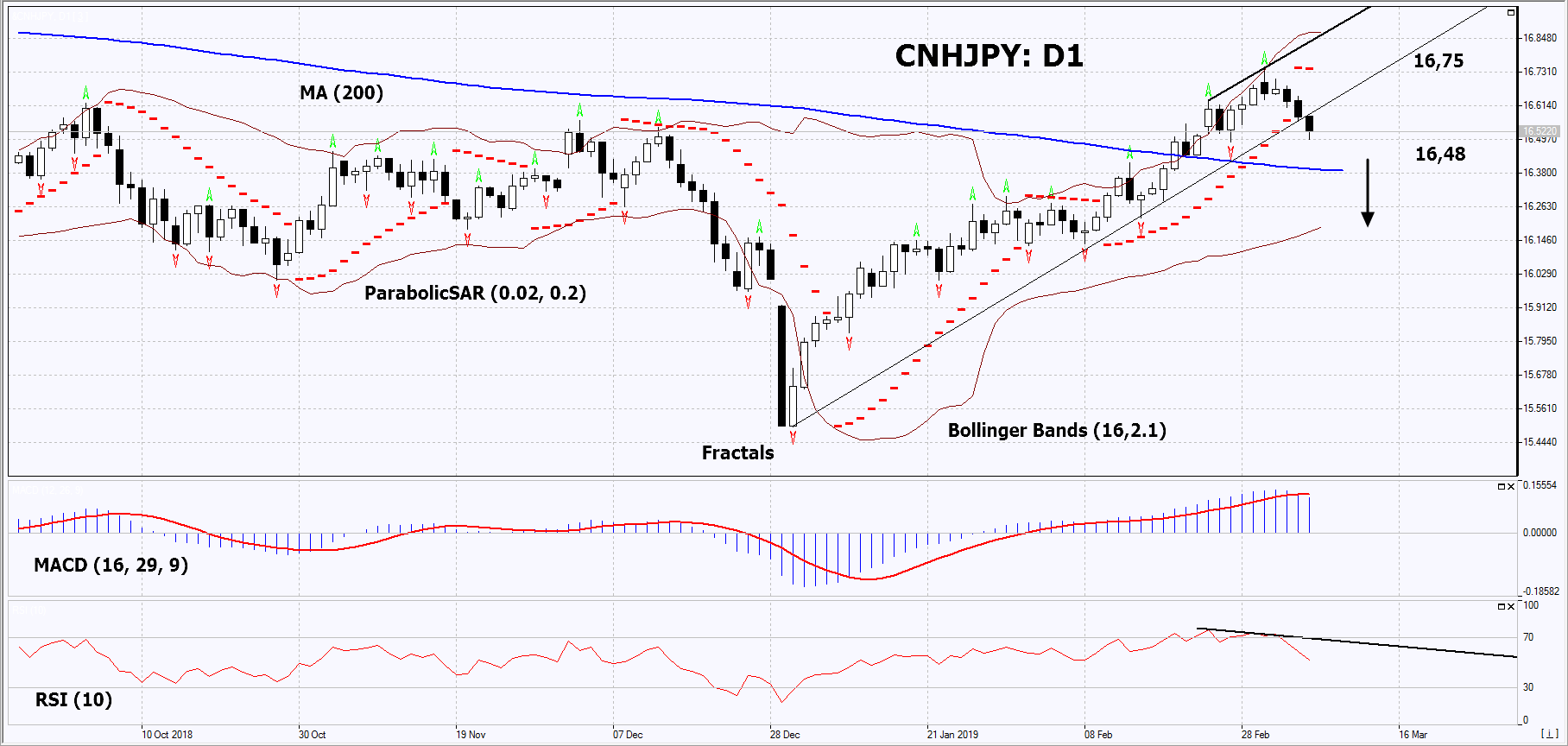By IFCMarkets
New facts of the slowdown in Chinese economy
In this review, we suggest considering the personal composite instrument (PCI) “&CNHJPY”. It reflects the price dynamics of the Chinese yuan against the Japanese yen. Will the CNHJPY fall?
Such dynamics are observed in case of the weakening of the yuan and the strengthening of the yen. On Friday, very weak foreign trade data for February 2019 came out in China. Exports decreased by 20.7% compared with February of the last year and turned out to be the lowest over 3 years. Imports fell by 5.2% for the third month in a row. As a result, China’s trade surplus was only $4.1 billion vs $39.1 billion in January 2019. All these factors may have a negative impact on the exchange rate of the yuan and indicate a further slowdown in the Chinese economy. Let us recall that according to the results of 2018, China’s GDP showed a minimum growth over the past 30 years by 6.6%. The recent Japanese macroeconomic data were positive. GDP for the 4th quarter of 2018 year over year grew by 1.9% and exceeded forecasts. The current account surplus in January was also better than expected. Let us note that it has been positive in Japan since July 2014.

On the daily timeframe, CNHJPY: D1 breached down the support line of the uptrend. A number of technical analysis indicators formed sell signals. The price decrease is possible in case of a faster slowdown in the Chinese economy compared with the Japanese economy.
- The Parabolic Indicator gives a bearish signal.
- The Bollinger bands have widened, which indicates low volatility. The upper Bollinger band is titled downward.
- The RSI indicator is above 50. It has formed a double negative divergence.
- The MACD indicator gives a bearish signal.
The bearish momentum may develop in case CNHJPY falls below its last fractal low at 16.48. This level may serve as an entry point. The initial stop loss may be placed above the last fractal high, the high since July 2018 and the Parabolic signal at 16.75. After opening the pending order, we shall move the stop to the next fractal low following the Bollinger and Parabolic signals. Thus, we are changing the potential profit/loss to the breakeven point. More risk-averse traders may switch to the 4-hour chart after the trade and place there a stop loss moving it in the direction of the trade. If the price meets the stop level (16.75) without reaching the order (16.48), we recommend to close the position: the market sustains internal changes that were not taken into account.
Summary of technical analysis
| Position | Sell |
| Sell stop | Below 16.48 |
| Stop loss | Above 16.75 |
Market Analysis provided by IFCMarkets
Free Reports:
 Get Our Free Metatrader 4 Indicators - Put Our Free MetaTrader 4 Custom Indicators on your charts when you join our Weekly Newsletter
Get Our Free Metatrader 4 Indicators - Put Our Free MetaTrader 4 Custom Indicators on your charts when you join our Weekly Newsletter
 Get our Weekly Commitment of Traders Reports - See where the biggest traders (Hedge Funds and Commercial Hedgers) are positioned in the futures markets on a weekly basis.
Get our Weekly Commitment of Traders Reports - See where the biggest traders (Hedge Funds and Commercial Hedgers) are positioned in the futures markets on a weekly basis.